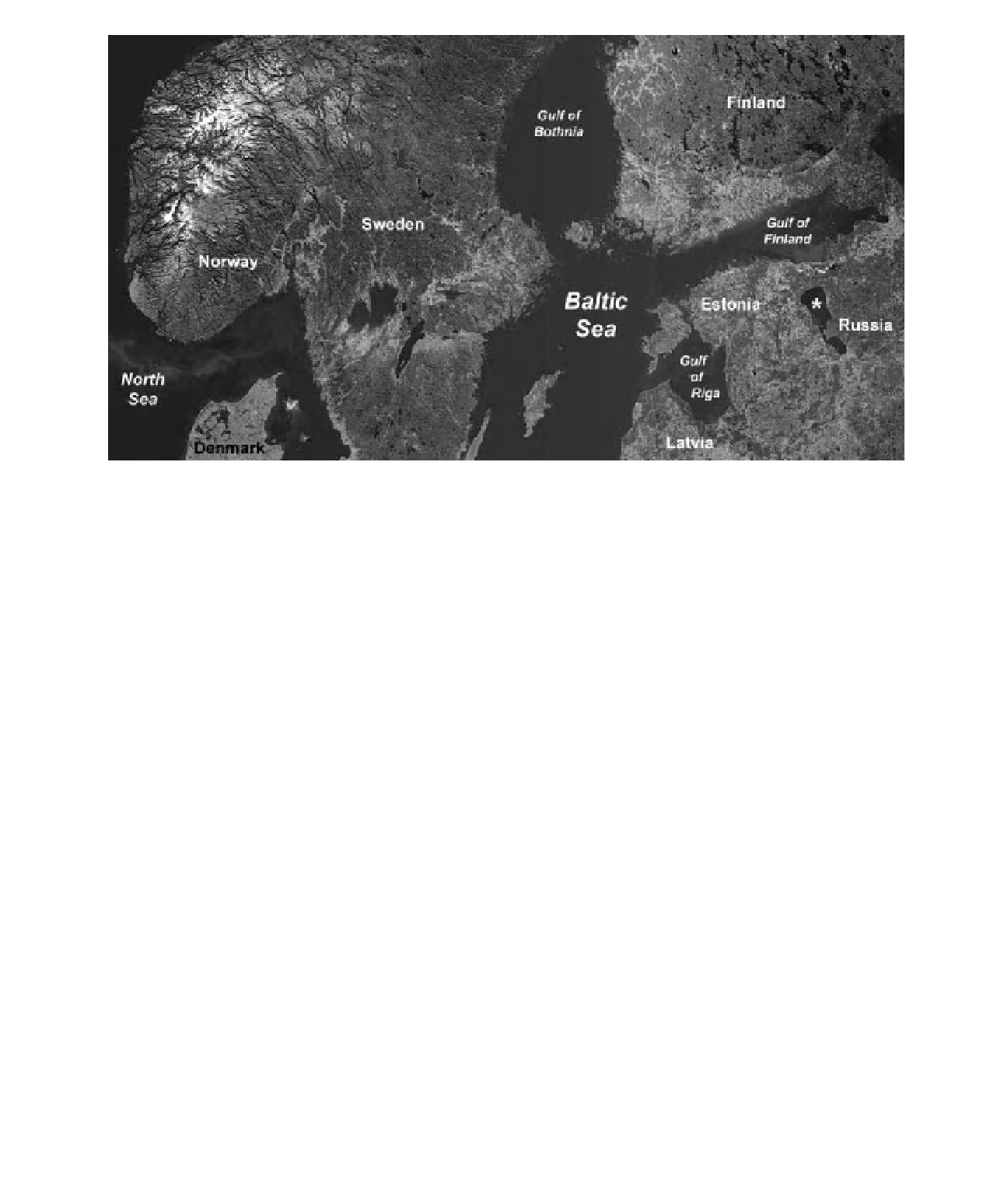Geoscience Reference
In-Depth Information
Figure 16-42.
Satellite image showing the central Baltic region of northern Europe. Mosaic assembled from nearly
cloud-free Multi-angle Imaging SpectroRadiometer (MISR) vertical imagery draped over a shaded-relief topographic
map, equidistant conic projection. Asterisk (*) indicates Lakes Peipsi-Pihkva. Adapted from NASA Visible Earth
<
>
http://visibleearth.nasa.gov/
.
The Baltic Sea is brackish with salinity of 6-8‰
in the central portion and only 1-2‰ in the
easternmost Gulf of Finland (Helsinki Commis-
sion 2011), which has a major inl uence on
coastal wetland conditions. Given its location
and proximity to large water bodies, Estonia has
a temperate climate transitional between conti-
nental and maritime (Arold 2005). Summers are
cool, winters are long with snow cover, and
annual precipitation averages 50-70 cm (Ilomets
1997). Much of the country consists of low-relief
terrain under 100 m above sea level, but the
southeastern portion has hilly relief exceeding
200 m in elevation. The whole of the country is
underlain by Paleozoic sedimentary bedrock
mantled by Pleistocene glacial sediments of vari-
able thickness and composition (Raukas and
Kajak 1997).
Estonia is rich in lakes and wetlands. Some
1200 lakes exceed one hectare in area, and
about 20,000 smaller bog pools exist (Arold
2005). More than one-i fth of the territory is
covered by swamps, marshes, fens and bogs
(Orru, Širokova and Veldre 1993; Ilomets 1997),
and more than 40 of these are protected as
national parks, nature reserves, or mire conser-
vation areas. A dozen of these are designated as
Ramsar wetlands of international importance
(Ramsar 2010h), ranging from coastal estuaries,
to raised bogs, to the delta of the Emajõgi River
draining into Lake Peipsi (Fig. 16-43). The peat-
lands of Estonia may be divided in three general
types (Valk 1988):
• Minerotrophic - Fens in depressions that are
supplied by ground water or surface runoff
rich in nutrients. Fens display great variety
with diverse l ora including
30 species of
Carex
(sedges) and are highly productive for
Vaccinium oxycoccos
(cranberries). This cat-
egory accounts for more than half of Esto-
nian mires.
• Mixotrophic - Transitional bogs generally
receive less ground water and more surface
runoff with fewer nutrients than fens. They
are intermediate in character between fens
and bogs and represent about one-eighth of
Estonian peatlands.
>




